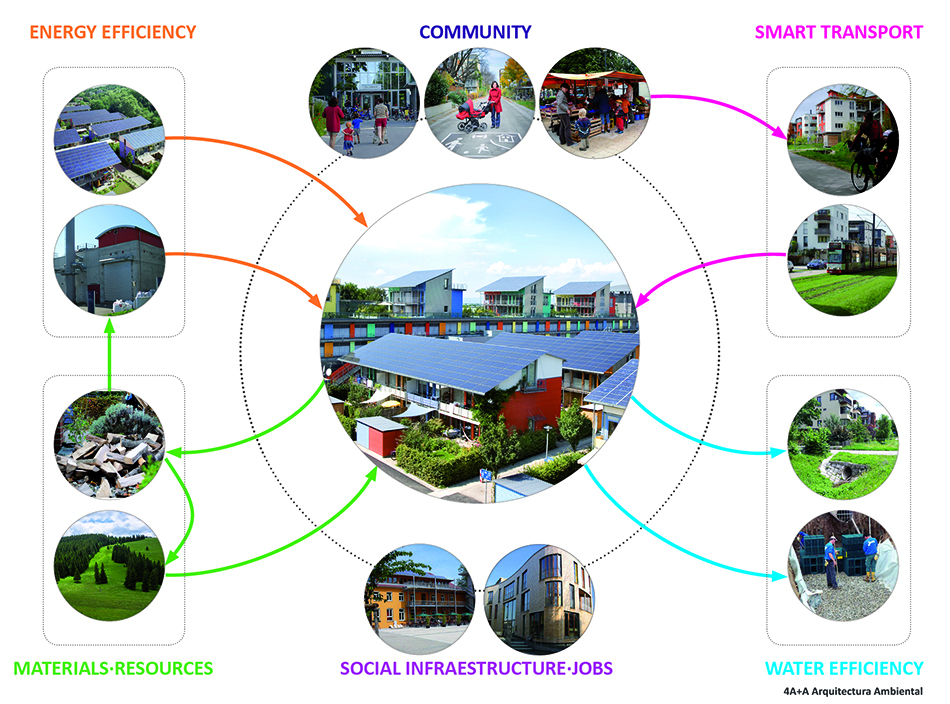SUSTAINABILITY AND ARCHITECTURE ( Part III)
THE ROLE OF PUBLIC ADMINISTRATION AND MARKET
The European, national and regional public authorities play a vital role not only from the regulation aspect – the last update of the Technical Code (CTE) regarding to energy saving arrives with delay. Moreover, the different aid and investment program for research and development which has been implemented recently to change the current model has been unsuccessful. In our country, the objectives of compliance with the 2020 European Standard which establishes a 20% reduction of energy consumption and CO₂ emissions of public and private buildings for the year 2020 are suffering suffer delays that could have been avoided. We must recover promptly lost time because if we do not, we will not get enough time to comply the regulation.
Undoubtedly, the public administration must stimulate this new movement and the “Green Economy” that make the Sustainability its main policy. The market for sustainable construction in our country is moving very slowly in comparison with other EU economies, mainly Central European and Scandinavian. International environmental certification like LEED (Leadership in Energy and Environmental Design), BREEAM or the national one VERDE, along with the construction standards as PassivHaus or Minergie are gaining momemtum in the construction market, which it is a very positive signal.
CONCLUSION. TOWARDS A GLOBAL VISION AND INTEGRATED ARCHITECTURE.
It is necessary to make a transition, from the current economic model to one based on a balance between the economic, social and environmental aspects, where the most polluting industries must be penalized and these industries must give space gradually to other ones that contaminate less. The change of the actual energy model based on fossil fuels to another kind based on the use of renewable sources is necessary and inevitable and should be implemented without delay. The present and future situation face a scenario of shortage of raw materials and water, a reduction of non-renewable energy resources such as oil, increased energy prices, moreover deforestation and rising in global temperatures.
The energy refurbishment of the existing housing stock, very old and inefficient, is an excellent opportunity to present and future: The room for improvement in order to reduce CO₂ emissions and energy consumption is enormous. It is necessary to promote a renewed vision in Architecture where business as usual must be the standard norm with most responsible and environmentally friendly practices.
 Integration Model of Social,Economic & Environmental Aspects · Triple Bottom Line. Vauban District.
Integration Model of Social,Economic & Environmental Aspects · Triple Bottom Line. Vauban District.
It must prevail a holistic vision of the Architecture, integrating energy efficient design – where consumption is zero or at least tends to be zero- with efficient consumption of drinking water, natural materials, recycled, recyclable and produced locally, plus an efficient management of construction waste, and moreover with an increased of the quality, comfort and bio-Habitability of interior spaces, making them toxic-free and healthier for its occupants.
If we engage on this new way of thinking, we can obtain benefits such as reducing operating costs and building management (Energy and water) in order to create buildings with low energy consumption and efficient systems. At market level is also possible to achieve an increase of the value of buildings both for sale or rent, and achieve a higher rate of return on investment (ROI). In the case of office buildings it is also possible to get a greater welfare for employees which results in health, productivity and reduced absenteeism. Also, the environmental benefits will be larger, while achieving a more balanced and respectful relationship with the environment.
All this is possible to do, but always keeping the most important thing in mind: Sustainable Architecture cannot be taken as a prescription or transitory fashion, but as an approach and an attitude.
Julio Bermejo architect · LEED AP BD+C
4A+A Arquitectura Ambiental
